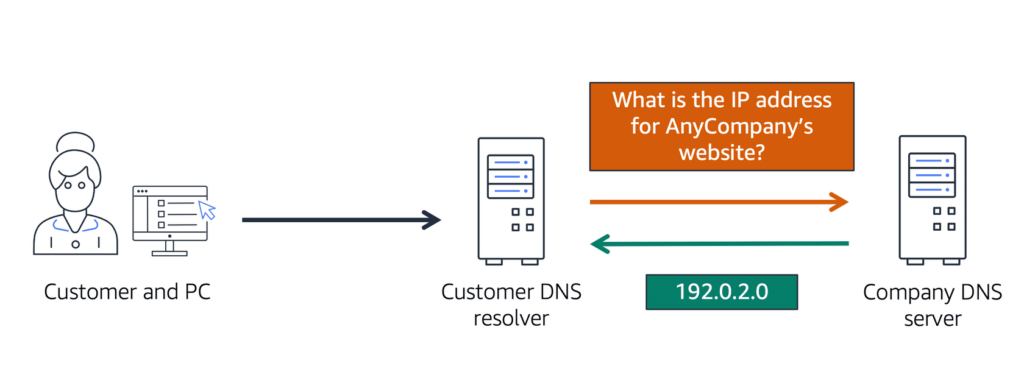Global Networking
Domain Name System (DNS)
Suppose that AnyCompany has a website hosted in the AWS Cloud. Customers enter the web address in their browser, and they are able to access the website. This happens because of Domain Name System (DNS) resolution. DNS resolution involves a customer DNS resolver communicating with a company DNS server. One can think of DNS as a phone book of the internet. DNS resolution is the process of translating a domain name to an IP address :

For example, suppose that somebody wants to visit AnyCompany’s website :
- When the domain name is entered in the browser, this request is sent to a customer DNS resolver
- The customer DNS resolver asks the company DNS server for the IP address that corresponds to AnyCompany’s website
- The company DNS server responds by providing the IP address for AnyCompany’s website
Amazon Route 53
Amazon Route 53 is a DNS web service. It gives developers and businesses a reliable way to route end users to internet applications hosted in AWS. Amazon Route 53 connects to infrastructure running in AWS (such as Amazon EC2 instances and load balancers). It can route users to infrastructure outside of AWS.
Another feature of Route 53 is the ability to manage the DNS records for domain names. The new domain can be registered directly in Route 53. DNS records for existing domain names managed by other domain registrars can also be transfered. This enables user to manage all of domain names within a single location. The following example describes how Route 53 and Amazon CloudFront work together to deliver content to customers :

Suppose that AnyCompany’s application is running on several Amazon EC2 instances. These instances are in an Auto Scaling group that attaches to an Application Load Balancer :
- A customer requests data from the application by going to AnyCompany’s website
- Amazon Route 53 uses DNS resolution to identify AnyCompany.com’s corresponding IP address, 192.0.2.0. This information is sent back to the customer
- The customer’s request is sent to the nearest edge location through Amazon CloudFront
- Amazon CloudFront connects to the Application Load Balancer, which sends the incoming packet to an Amazon EC2 instance